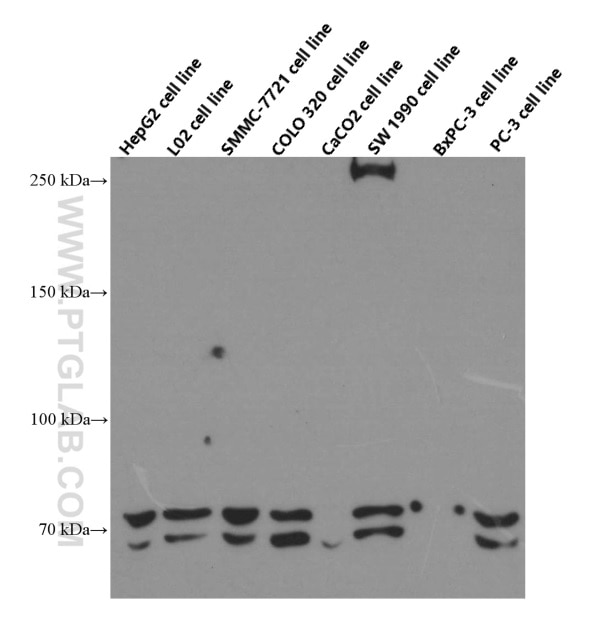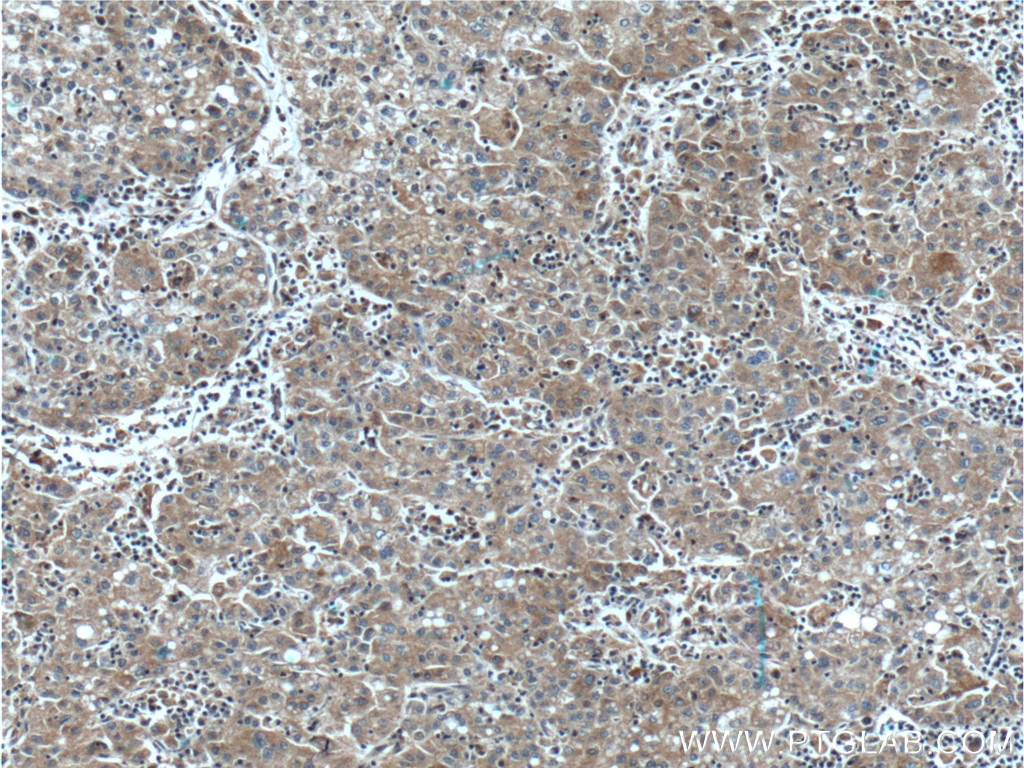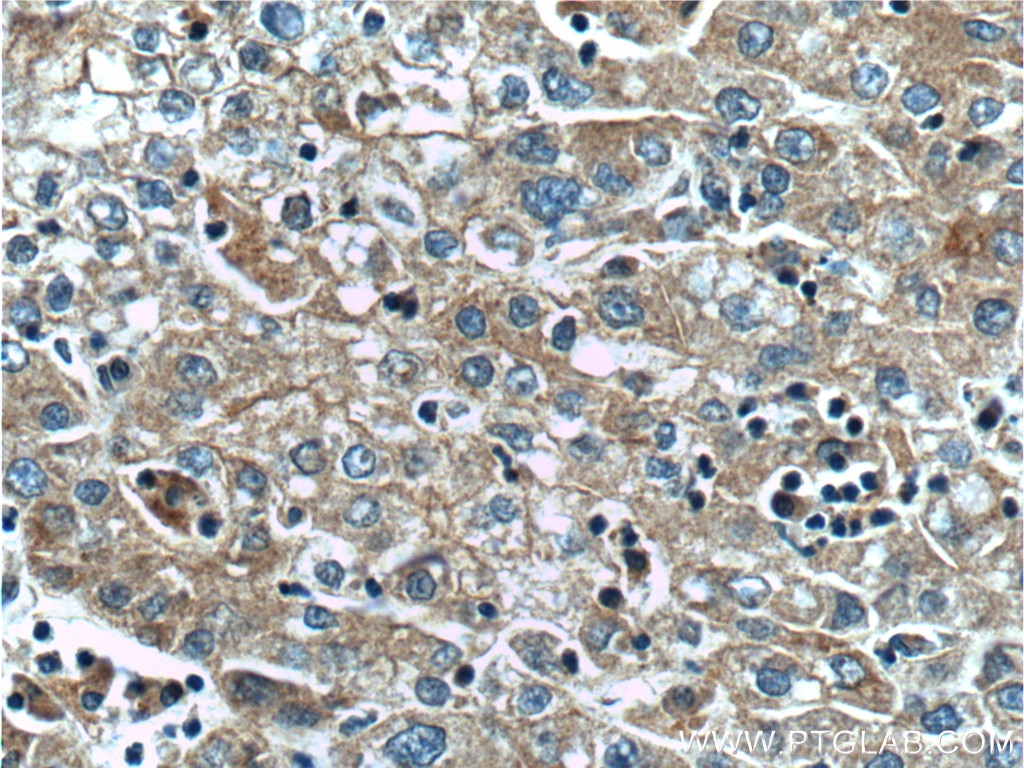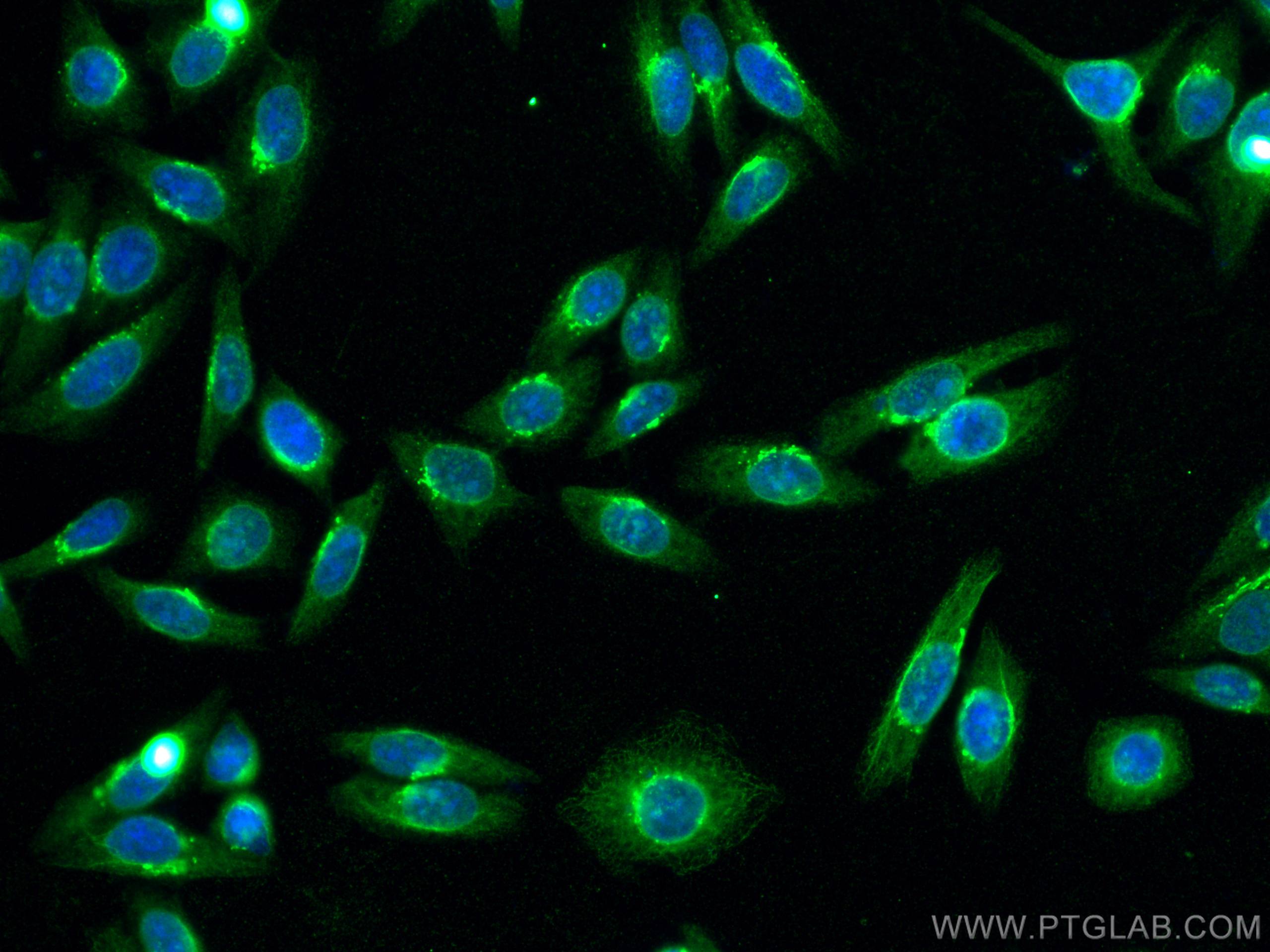Validation Data Gallery
Tested Applications
| Positive WB detected in | HepG2 cells, L02 cells, SMMC-7721 cells, COLO 320 cells, Caco-2 cells, SW 1990 cells, BxPC-3 cells, PC-3 cells |
| Positive IHC detected in | human liver cancer tissue Note: suggested antigen retrieval with TE buffer pH 9.0; (*) Alternatively, antigen retrieval may be performed with citrate buffer pH 6.0 |
| Positive IF/ICC detected in | HepG2 cells |
Recommended dilution
| Application | Dilution |
|---|---|
| Western Blot (WB) | WB : 1:1000-1:8000 |
| Immunohistochemistry (IHC) | IHC : 1:50-1:500 |
| Immunofluorescence (IF)/ICC | IF/ICC : 1:400-1:1600 |
| It is recommended that this reagent should be titrated in each testing system to obtain optimal results. | |
| Sample-dependent, Check data in validation data gallery. | |
Published Applications
| WB | See 7 publications below |
Product Information
66381-1-Ig targets SLCO1B3/OATP1B3 in WB, IHC, IF/ICC, ELISA applications and shows reactivity with human samples.
| Tested Reactivity | human |
| Cited Reactivity | human |
| Host / Isotype | Mouse / IgG1 |
| Class | Monoclonal |
| Type | Antibody |
| Immunogen |
CatNo: Ag19033 Product name: Recombinant human SLCO1B3 protein Source: e coli.-derived, PET28a Tag: 6*His Domain: 11-48 aa of BC105597 Sequence: AESASSEKKKTRRCNGFKMFLAALSFSYIAKALGGIIM 相同性解析による交差性が予測される生物種 |
| Full Name | solute carrier organic anion transporter family, member 1B3 |
| Calculated molecular weight | 702 aa, 77 kDa |
| Observed molecular weight | 68-77 kDa |
| GenBank accession number | BC105597 |
| Gene Symbol | SLCO1B3 |
| Gene ID (NCBI) | 28234 |
| RRID | AB_2881757 |
| Conjugate | Unconjugated |
| Form | |
| Form | Liquid |
| Purification Method | Protein G purification |
| UNIPROT ID | Q9NPD5 |
| Storage Buffer | PBS with 0.02% sodium azide and 50% glycerol{{ptg:BufferTemp}}7.3 |
| Storage Conditions | Store at -20°C. Stable for one year after shipment. Aliquoting is unnecessary for -20oC storage. |
Background Information
SLCO1B3, also known as OATP8 or OATP1B3, is a member of Organic Anion Transporting Polypeptides (OATPs) which are sodium-independent organic anion transporters mediating the uptake of a wide range of structurally diverse endogenous and exogenous compounds including bile acids, hormone conjugates, peptides, toxins, as well as a multitude of therapeutic drugs. SLCO1B3 is specifically expressed in liver under normal condition, while its expression has also been observed in cancer tissues like colon, prostate and pancreas. It corresponds to Oatp1b2 in mice, with the gene symbol Slco1b2. The mouse genome encodes only a single transporter gene in the OATP1B subfamily, because SLCO1B1 and SLCO1B3 arose in primates by gene duplication after divergence from rodents. The molecular mass of SLCO1B3 is highly dependent on the glycosylation modification (deglycosylated form of 65 kDa, fully-glycosylated form of 120 kDa).
Protocols
| Product Specific Protocols | |
|---|---|
| IF protocol for SLCO1B3/OATP1B3 antibody 66381-1-Ig | Download protocol |
| IHC protocol for SLCO1B3/OATP1B3 antibody 66381-1-Ig | Download protocol |
| WB protocol for SLCO1B3/OATP1B3 antibody 66381-1-Ig | Download protocol |
| Standard Protocols | |
|---|---|
| Click here to view our Standard Protocols |
Publications
| Species | Application | Title |
|---|---|---|
Aging (Albany NY) SLCO1B3 promotes colorectal cancer tumorigenesis and metastasis through STAT3. | ||
Sci Rep OATP1B3 (699G>A) and CYP2C9*2, *3 significantly influenced the transport and metabolism of glibenclamide and glipizide. | ||
Aging (Albany NY) Comprehensive analysis of scRNA-seq and bulk RNA-seq reveal the characteristics of disulfidptosis and a prognostic signature in BLCA | ||
Bull Exp Biol Med The Effect of Original Russian Neurotropic Drugs on Organic Anion Transporting Polypeptides OATP1B1 and OATP1B3 | ||
Nat Commun Identification of indocyanine green as a STT3B inhibitor against mushroom α-amanitin cytotoxicity | ||
Bull Exp Biol Med Regulation of the Organic Anion Transporting Polypeptide 1B3 (OATP1B3) by Sex Hormones |




